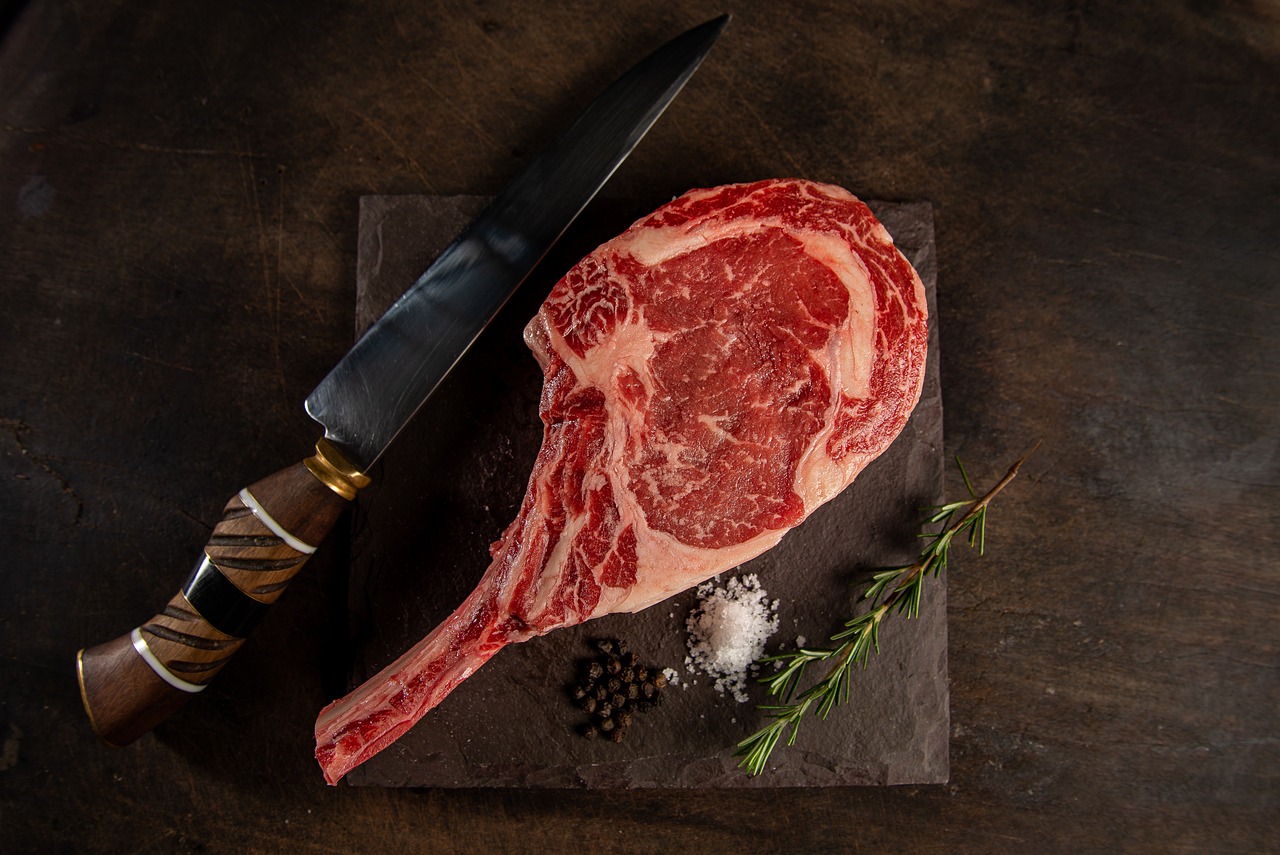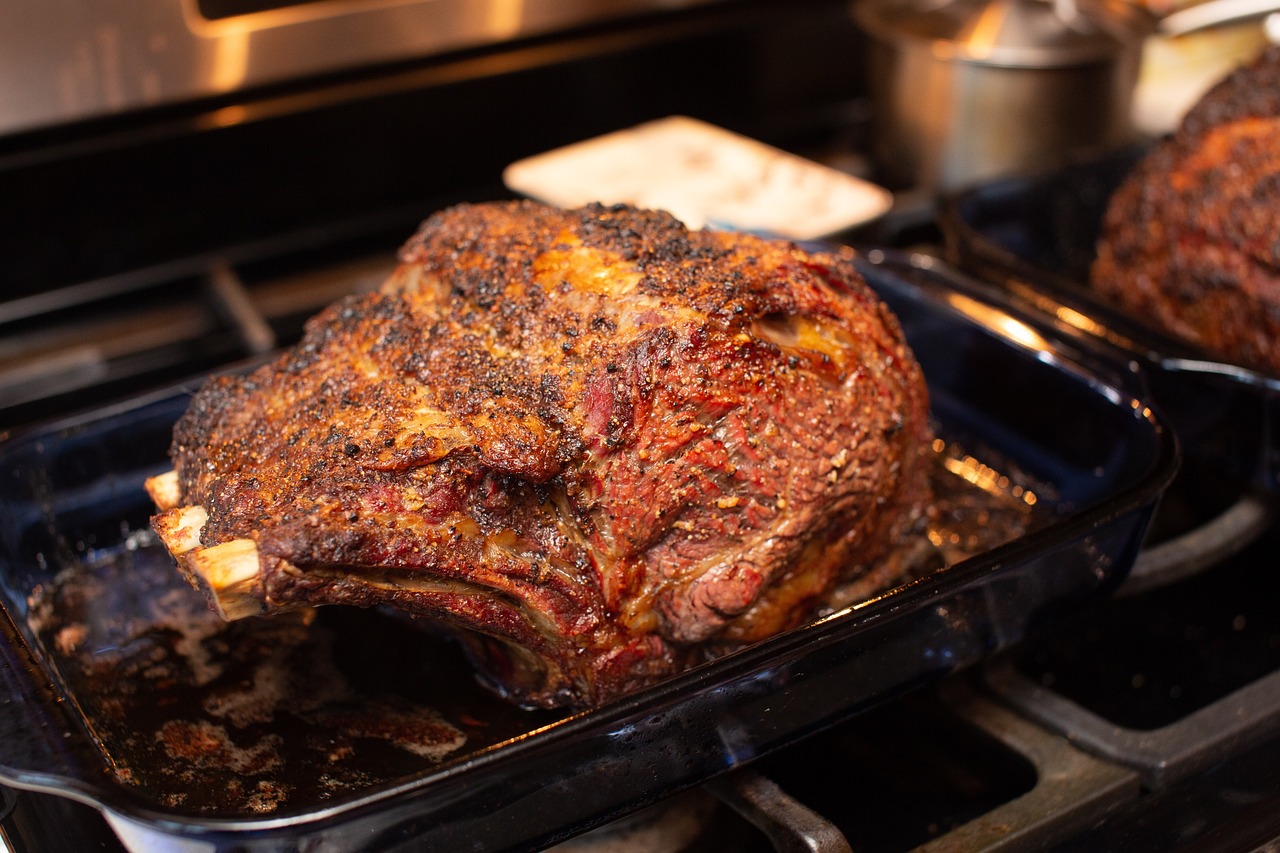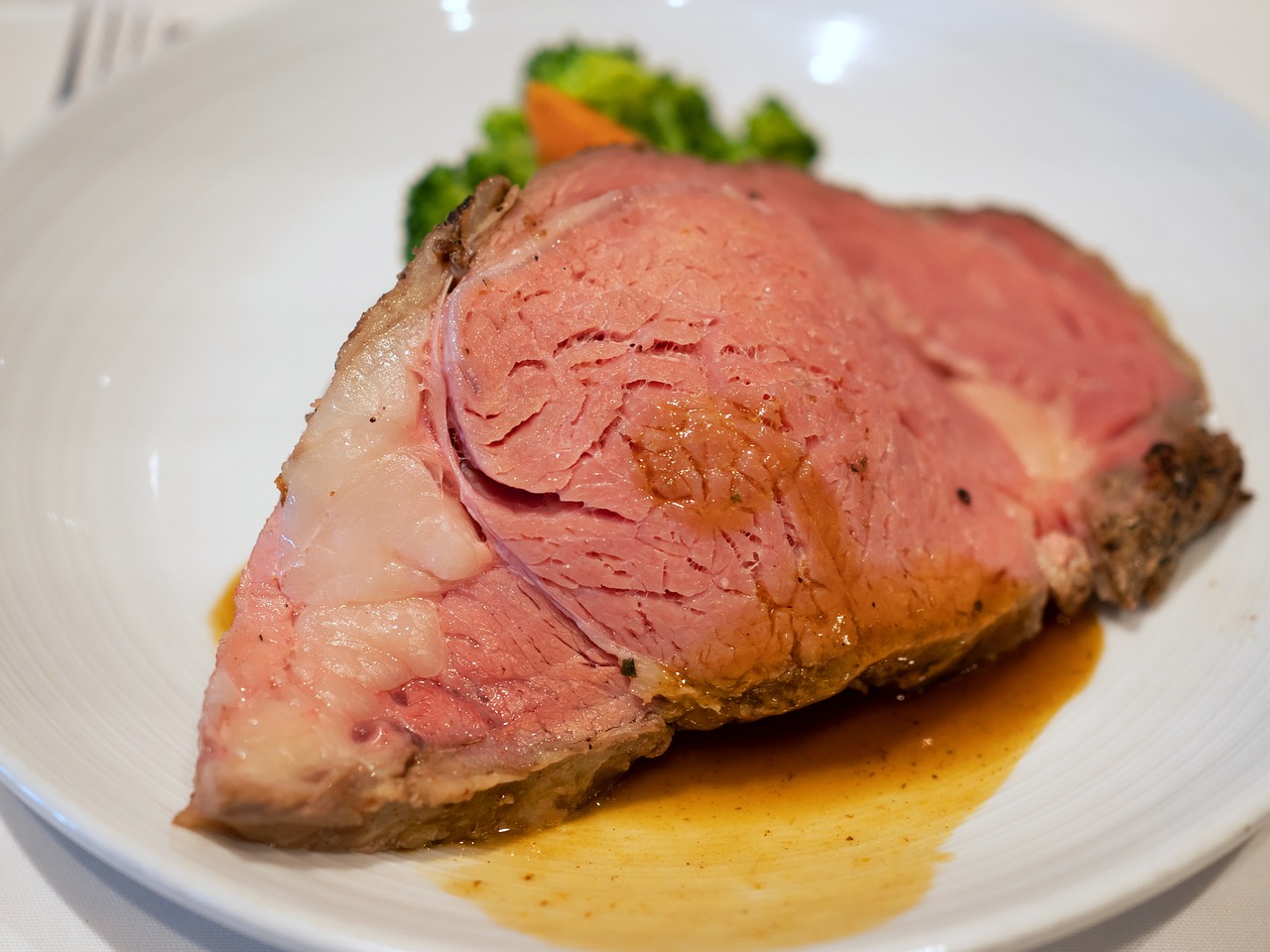Introduction
Beef ribs are a favorite of meat lovers around the world, known for their succulent texture and bold, beefy flavor. Whether slow-cooked to perfection or grilled over an open flame to bring out the smoky flavors, beef ribs never disappoint. However, not all beef ribs are created equal, and there are different cuts of beef ribs, each with its unique characteristics and flavors.
Welcome To Types Of Beef Ribs: Exploring The Varieties Of Beef Ribs Blog Post!
In this post, we will explore the different types of beef ribs available in the market. From Back ribs to Short ribs, everything you need to know about each cut will be discussed. Knowing the right type of beef ribs can help you select the perfect cut for your preferred cooking method and taste preferences.


Why Understanding The Different Types Of Beef Ribs Is Important
Understanding the differences between the types of beef ribs is crucial as it can help you achieve the perfect dish. Each cut has its unique meat-to-bone ratio, fat content, and cooking time. Knowing which cut works best with different cooking methods can help you avoid overcooking or undercooking the meat, ensuring that it’s perfectly cooked to your taste.
In conclusion, beef ribs are a delicious cut of meat that can be prepared and cooked in various ways. By understanding the different types of beef ribs, meat lovers can create a perfect dish that meets their preferences.
Common Types Of Beef Ribs
Beef ribs are available in a wide variety of types, which can be confusing for meat lovers who are new to cooking with beef ribs. Knowing the differences between the types of beef ribs can make a big difference in achieving the perfect dish. In general, there are four common types of beef ribs: back ribs, plate ribs, short ribs, and chuck ribs.
Back Ribs: A Classic Cut
Back ribs are the most popular and well-known type of beef ribs. They come from the same section as pork baby back ribs and are also called “beef baby backs.” This cut is leaner than other types of beef ribs, with lean meat surrounding the small bones. The meat is tender and flavorful, with a slightly sweet taste.
Plate Ribs: The Perfect Combination Of Meat And Fat
Plate ribs come from the lower section of ribcage, closer to the belly of the cow. They have a higher meat-to-bone ratio compared to back ribs, and the meat has a good amount of marbling, making it incredibly rich and flavorful. This cut is perfect for slow cooking methods, such as smoking or braising, which allows the high-fat content to render and enhance the flavor.
Short Ribs: A Versatile And Flavorful Cut
Short ribs come from the section just below the chuck, making them a versatile cut that can be cooked in a variety of ways. They have a higher meat-to-bone ratio than plate ribs and offer an incredibly rich flavor, with a deep beefy taste. Short ribs are available in two styles: English cut and flanken cut. English cut ribs are the most common, with the meat cut between the bones, while flanken cut ribs are cut across the bone, creating thin strips of meat and bone that are perfect for grilling.


Beef ribs offer meat lovers a rich variety of flavors and textures, making them a must-try for any carnivore. Understanding the differences between the different types of beef ribs, such as back ribs, plate ribs, and short ribs, allows you to choose the perfect cut for your preferred cooking method and taste preferences.
Exploring Lesser-known Cuts
While back ribs, plate ribs, and short ribs are the most common types of beef ribs, there are a few other lesser-known cuts worth exploring as well.
Chuck Ribs: A Budget-friendly Option With Great Flavor
Chuck ribs come from the shoulder section of the cow and are a budget-friendly alternative to other cuts. They have a good amount of meat and fat, which renders during cooking and adds flavor. Cook them low and slow to achieve tender, flavorful meat.
Brisket Ribs: Tender And Juicy
Brisket ribs come from the same section as brisket and are a meaty and flavorful option. They do require a bit more effort in cooking, as they can be tough if not cooked properly. However, when done right, brisket ribs are incredibly tender and juicy, with a rich beef flavor.
Flanken Ribs: A Thin And Quick-cooking Cut
Flanken cut ribs, also known as Korean-style short ribs, are thin and quick-cooking, making them perfect for grilling and stir-fries. They are cut across the bone and have a high meat-to-bone ratio, with a rich and beefy flavor. Flanken ribs can be marinated for extra flavor or seasoned simply with salt and pepper.
Exploring these lesser-known cuts of beef ribs can add variety and excitement to your cooking. Consider trying chuck ribs for a budget-friendly option, brisket ribs for tender and juicy meat, or flanken ribs for a quick and delicious meal. Remember to adjust your cooking method to suit the cut of meat and experiment with different seasonings and marinades to bring out the best flavor.
Exploring Lesser-known Cuts
While back ribs, plate ribs, and short ribs are the most common types of beef ribs, there are a few other lesser-known cuts worth exploring as well. Chuck ribs come from the shoulder section of the cow and are a budget-friendly alternative to other cuts. They have a good amount of meat and fat, which renders during cooking and adds flavour. Brisket ribs come from the same section as brisket and are a meaty and flavourful option. Flanken cut ribs, also known as Korean-style short ribs, are thin and quick-cooking, making them perfect for grilling and stir-fries.
Chuck Ribs: A Budget-friendly Option With Great Flavor
Chuck ribs have a rich beef flavor, a good amount of meat and fat, which renders during cooking and adds flavour. They are a budget-friendly alternative to other cuts but require a low and slow cooking method to achieve tender, flavourful meat.
Brisket Ribs: Tender And Juicy
Brisket ribs are a meaty and flavourful option that comes from the same section as brisket. They do require a bit more effort in cooking, as they can be tough if not cooked properly. However, when done right, brisket ribs are incredibly tender and juicy, with a rich beef flavor.
Flanken Ribs: A Thin And Quick-cooking Cut
Flanken cut ribs are thin and quick-cooking, making them perfect for grilling and stir-fries. They have a high meat-to-bone ratio, with a rich and beefy flavor. Flanken ribs can be marinated for extra flavour or seasoned simply with salt and pepper.
Brisket Vs. Short Ribs
Brisket Vs. Short Ribs: Cut Comparison
Brisket ribs come from the chest of the cow, while short ribs come from the plate and rib areas. Brisket ribs are longer and have more meat while short ribs tend to be shorter and smaller. Brisket ribs also have a higher fat content, which contributes to their rich flavour. Short ribs are more marbled, which makes them more tender, and they’re a good choice for slow cooking or braising.
Best Cooking Methods For Brisket Ribs And Short Ribs
Brisket ribs are best cooked low and slow with indirect heat or smoking, which helps to tenderize the meat and allow the fat to render. They can be wrapped in foil during cooking to help retain moisture and speed up the cooking time. Short ribs are also best cooked low and slow, but typically require a shorter cooking time than brisket ribs. They can be braised or slow-cooked in a Dutch oven with vegetables and a liquid for added flavor.
Exploring these lesser-known cuts of beef ribs can add variety and excitement to your cooking. Consider trying chuck ribs for a budget-friendly option, brisket ribs for tender and juicy meat, or flanken ribs for a quick and delicious meal. Remember to adjust your cooking method to suit the cut of meat and experiment with different seasonings and marinades to bring out the best flavor.
Preparing And Cooking Beef Ribs
Preparing Beef Ribs For Cooking
Before cooking beef ribs, it’s important to remove the membrane from the bone side of the rack. This can be done by loosening the membrane with a knife or a simple trick of using a paper towel to grip and pull it off. It’s also important to trim any excess fat, which can lead to flare-ups and an overly greasy end result.
Grilling Beef Ribs: Tips And Techniques
Grilling beef ribs is a popular method for creating a smoky, charred flavor. To achieve the best results, it’s important to preheat the grill and use indirect heat. This means placing the ribs on a cooler part of the grill, away from direct flame. Basting with a tangy barbecue sauce during the last few minutes of cooking can enhance the flavor and create a caramelized coating.
Smoking Beef Ribs: Wood Options And Cooking Times
Smoking beef ribs is a great way to infuse them with rich, smoky flavor. Popular wood options for smoking include mesquite, hickory, and applewood. It’s important to monitor the cooking temperature and use a meat thermometer to check for doneness. At a smoking temperature of around 225-250°F, beef ribs typically take 4-6 hours to cook, depending on the size and thickness of the cut. Wrapping the ribs in foil during the last hour of cooking can help to ensure tender, juicy results.
Overall, preparing and cooking beef ribs can be a delicious and rewarding process. Whether grilling, smoking, or slow-cooking, taking the time to properly prepare and season the meat can yield mouthwatering results. Experimenting with different cooking methods and seasonings can also add variety and excitement to your meals.
Dry Rubs And Sauces For Beef Ribs
Dry Rubs For Beef Ribs: Spicy And Sweet Options
When preparing beef ribs, a dry rub can add flavor and texture to the meat. A classic dry rub for beef ribs typically includes salt, pepper, paprika, garlic powder, and onion powder. However, there are many variations on this recipe that can add different flavors and levels of heat.
For those who like a kick of spice, a dry rub with chili powder or cayenne pepper can be a great choice. Alternatively, those with a sweet tooth may prefer a rub that includes brown sugar or honey. Other common ingredients in beef rib dry rubs include cumin, coriander, and mustard powder.
Sauces For Beef Ribs: Classic BBQ, Tangy Mustard, And More
Sauces are another great way to enhance the flavor of beef ribs. A classic BBQ sauce is a popular choice, with a mixture of tomato paste, brown sugar, vinegar, and spices. However, there are many different types of BBQ sauces to choose from, including ones with a smoky flavor or a tangy, vinegar-based sauce.
For those who prefer a mustard-based sauce, a tangy and savory option can complement the rich flavor of beef ribs. Alternatively, a sweet and spicy sauce with honey and chili flakes can add a unique flavor combination. Other options for sauces include teriyaki or hoisin sauce for an Asian-inspired twist.


Overall, there are many different dry rubs and sauces to choose from when preparing and cooking beef ribs. Experimenting with different flavors and ingredients can help to create a unique and delicious dish that is sure to be a hit at any backyard barbecue or family gathering.
Pairing Beef Ribs With Side Dishes
Pairing Beef Ribs With Side Dishes: Classic BBQ Sides, Salads, And More
When it comes to serving beef ribs, deciding on the perfect side dish can be just as important as the meat itself. There are endless possibilities when it comes to side dishes that complement beef ribs. Here are some classic BBQ sides, fresh salads, and other options to consider when pairing with beef ribs:
- Classic BBQ Sides: Traditional barbecue sides such as cole slaw, potato salad, and baked beans are all great options to complement beef ribs. They provide a balance of texture and flavor with creamy and tangy tastes that balance out the smokiness of the ribs.
- Salads: Light salads can also be enjoyed with beef ribs, especially during the summer months. A fresh green salad with a tangy vinaigrette or a Greek salad with feta cheese and olives can be a refreshing and delicious choice.
- Corn on the Cob: What could be better than juicy sweet corn with a slab of beef ribs? Boiled corn on the cob with butter and milk is a classic side dish that pairs perfectly with beef ribs.
- Macaroni and Tomatoes: Pasta salads are always a crowd-pleaser, and macaroni and tomatoes is a classic Southern side dish that adds a burst of flavor to any meal.
- Wedge Salad: For those who want a salad with a twist, a wedge salad is an excellent choice. With crispy lettuce, crumbly blue cheese, and bacon bits, it’s a hearty and flavorful side dish that complements beef ribs perfectly.
Ultimately, the dish’s side should complement and balance the flavor and richness of beef ribs. So whether you’re sticking with classic BBQ sides or venturing into new territory, choosing the perfect side dish can elevate a simple beef ribs meal into a memorable dining experience.
Tips For Serving And Storing Beef Ribs
Serving Beef Ribs: Letting Them Rest And Cutting
Once you’ve cooked your beef ribs to perfection, it’s important to let them rest for a few minutes before serving. This allows the juices to settle back into the meat and ensures that each bite is tender and flavorful.
When it comes to cutting the meat, you’ll want to slice against the grain to ensure that it’s not tough or chewy. This means looking for the direction of the muscle fibers and cutting perpendicular to them. Cut the meat into individual rib portions, or leave it whole for a stunning presentation.
Storing Beef Ribs: Keeping Them Fresh And Safe
Proper storage is crucial when it comes to keeping leftover beef ribs safe to eat. Once the meat has cooled down to room temperature, transfer it to an airtight container. This will keep bacteria from growing and extend the shelf life of the meat.
Stored in the refrigerator, cooked beef ribs will last 3-4 days. Frozen beef ribs will last up to 6 months in the freezer. When reheating, make sure that the meat reaches an internal temperature of 165°F (74°C) before consuming.
Remember, it’s always better to be safe than sorry when it comes to storing and reheating beef ribs. With the right storage techniques, you can safely enjoy the deliciousness of your beef ribs for days or even months to come.
Tips For Serving And Storing Beef Ribs
Serving Beef Ribs: Letting Them Rest And Cutting
After cooking beef ribs to perfection, it is essential to allow them to rest for a few minutes to ensure that each bite is tender and flavorful. Slicing against the grain is crucial in making sure that the meat is not tough or chewy. The cooked meat should be cut into individual rib portions or kept whole for an impressive presentation.
Storing Beef Ribs: Keeping Them Fresh And Safe
Proper storage is necessary to keep the cooked beef ribs safe to eat. Once the meat has cooled down to room temperature, it should be placed in an airtight container to prevent bacteria growth and extend its shelf life. The cooked beef ribs can last for up to 3-4 days when refrigerated and up to 6 months when frozen. When reheating, ensure that the meat reaches an internal temperature of 165°F (74°C) before consuming.
Conclusion
Serving and storing beef ribs can make or break a delicious meal. It is crucial to allow the ribs to rest before slicing and cutting properly to ensure tenderness. Proper storage helps to keep the leftover meat safe to eat for an extended period.
Choosing The Right Beef Ribs For Your Next Meal
Different types of beef ribs offer unique flavors and characteristics, and it is essential to select the right type to prepare your ideal meal. Short ribs, plate short ribs, and chuck ribs are the four types of beef ribs to choose from, and each has its unique taste and flavor profiles.
Key Takeaways And Final Thoughts
Beef ribs are a versatile and delicious option for any meal, whether it is a casual outdoor barbecue or stylish dinner party. Proper preparation, cooking, and storage techniques can help extend the shelf life of leftover meat while ensuring that it remains safe to eat. With the right knowledge, anyone can become a pro at making delicious and tender beef ribs.
FAQ: Types of Beef Ribs – Exploring the Varieties of Beef Ribs
Q: What are the different cuts of beef ribs?
A: There are three main cuts of beef ribs: Plate Short Ribs, Back Ribs, and Chuck Short Ribs. However, there are also two additional cuts that are worth mentioning – English Cut and Flanken Cut.
Q: What are Plate Short Ribs?
A: Plate Short Ribs are the mightiest of all beef ribs. They are incredibly meaty and have a large bone running through the center. They are perfect for braising or slow-cooking to get the best flavors and tenderness.
Q: What are Back Ribs?
A: Back ribs are taken from the upper part of the rib cage and are meatier than pork baby back ribs. They have a curved bone and a good amount of marbling, which gives them great flavor when grilled or smoked.
Q: What are Chuck Short Ribs?
A: Chuck Short Ribs are a more commonly available cut that still retain their meatiness and flavor. They have a slightly smaller bone compared to Plate Short Ribs, but can still be slow-cooked to perfection.
Q: What are English Cut and Flanken Cut?
A: English Cut beef ribs are taken from the center of the Plate Short Ribs and have a rectangular shape. Flanken Cut beef ribs are a cross-cut of the Plate Short Ribs and have a more narrow bone surrounded by a generous amount of meat.
Q: How should I cook beef ribs?
A: The best way to cook beef ribs depends on the cut. Plate Short Ribs and Chuck Short Ribs are best braised or slow-cooked, while Back Ribs are great when grilled or smoked. It’s important to remember to season the beef ribs well before cooking to enhance their natural flavors.
Q: Where can I find beef ribs?
A: Beef ribs can be found at most meat markets or grocery stores. It’s best to ask the butcher for the specific cut you’re looking for to ensure the best quality and flavor. You can also enjoy beef ribs at restaurants that specialize in barbecue or meat-centric cuisine.



Hey there! If you’re a fan of authentic Mexican cuisine, you’re in for a treat with Humberto Cruz at pointcafeny.com. They take immense pride in serving their customers with home-cooked, genuine Mexican dishes crafted with the finest ingredients. From flavorful salsa to mouthwatering tamales and enchiladas, they offer an experience that brings the taste of family food from back home right to your table. Don’t forget to check out their tempting Daily Specials for a delightful culinary adventure!
